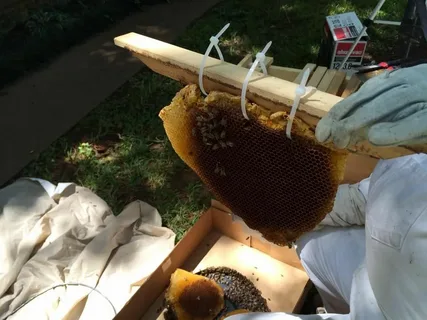Urban gardening has become increasingly popular as more people embrace sustainable living and local food production. However, the presence of honey bees in urban areas can sometimes create challenges, especially when hives form too close to homes, schools, or public spaces. While bees are essential pollinators, managing their populations responsibly through professional removal plays a vital role in keeping both people and gardens healthy. Understanding how honey bee removal supports urban ecosystems helps gardeners appreciate the delicate balance between nature and human activity.
Protecting Pollinator Populations Responsibly
Honey bees are crucial to urban gardens because they pollinate fruits, vegetables, and flowering plants. Yet, unmanaged or poorly located colonies can pose safety risks. Professional honey bee removal doesn’t harm the bees; it relocates them safely to more suitable habitats, such as apiaries or rural farms. This humane approach ensures that bees continue to contribute to pollination without threatening residents or damaging property.
By relocating rather than exterminating, professional removal services preserve bee populations while preventing dangerous encounters. This balance allows pollinators to thrive and maintain their critical role in supporting urban biodiversity. In short, responsible honey bee removal ensures that pollinators remain part of the ecosystem without compromising public safety.
Encouraging Stronger Pollination Cycles
Healthy gardens rely on consistent and diverse pollination. When bees are relocated to controlled environments, they become more productive and healthier, leading to better pollination outcomes for nearby green spaces. Overcrowded or distressed colonies can lead to erratic pollination patterns and even disease spread among local bee populations. Removing and rehousing these hives give bees a better chance to flourish in stable environments, reducing stress and improving pollination efficiency in the long term.
Moreover, when problematic hives are safely removed, urban gardeners can enjoy uninterrupted pollination from other healthy bee colonies in the area. This steady pollination cycle helps ensure that fruits, vegetables, and flowering plants continue to produce abundantly throughout the growing season.
Preventing Structural and Environmental Damage
Unmanaged honey bee colonies often build hives in walls, attics, or sheds, where they can cause structural damage and attract pests. The wax, honey, and moisture from the hives can seep into building materials, leading to costly repairs and sanitation issues. Professional bee removal eliminates these risks by carefully extracting the colony and cleaning the affected area to prevent reinfestation.
Beyond protecting structures, removal also safeguards the surrounding environment. Abandoned hives can attract ants, rodents, and wax moths, which disrupt the ecological balance of urban gardens. Timely removal prevents these issues, helping keep urban gardens clean, pest-free, and conducive to healthy plant growth.
Reducing the Spread of Bee Diseases
Bee populations, like any living community, are vulnerable to parasites and diseases. When a colony becomes infected, it can spread pathogens to other local bee groups, weakening the entire pollination network. Professional removal services not only relocate bees but also inspect colonies for signs of disease or infestation. This proactive measure helps prevent the spread of harmful conditions such as Varroa mite infestations or foulbrood, both of which can devastate bee populations.
By ensuring that only healthy colonies remain in the ecosystem, bee removal contributes to the overall resilience of pollinator networks in urban environments. In turn, healthier bees mean more efficient pollination and stronger gardens.
Promoting Safer, More Enjoyable Garden Spaces
One of the greatest benefits of honey bee removal is creating a safer environment for urban gardeners and the community. While honey bees are not naturally aggressive, they will defend their hives if threatened. In densely populated areas, a disturbed colony can cause panic or allergic reactions among residents. Removing hives from high-traffic zones minimizes these risks and makes outdoor spaces safer for gardening, recreation, and education.
Additionally, gardeners can work more confidently when they know that bee populations are being managed humanely. This harmony between human activity and natural pollination supports a sustainable, enjoyable gardening experience.
In thriving urban gardens, a balance between people and pollinators is essential. Honey bee removal plays an important role in maintaining that harmony by ensuring bees are safely relocated, garden spaces stay secure, and pollination continues naturally. By considering professional honey bee removal service, homeowners and gardeners can protect both their property and the environment. This humane approach keeps bee populations healthy, encourages sustainable gardening, and allows communities to enjoy vibrant, flourishing green spaces without the risks of unmanaged hives. When handled responsibly, everyone—bees, plants, and people—benefits.


